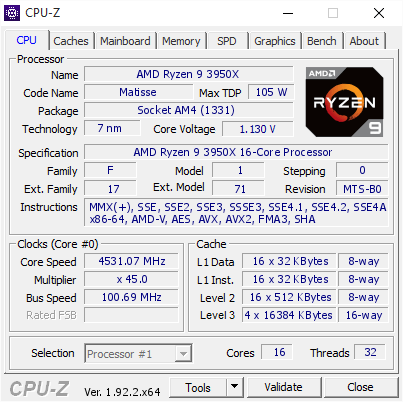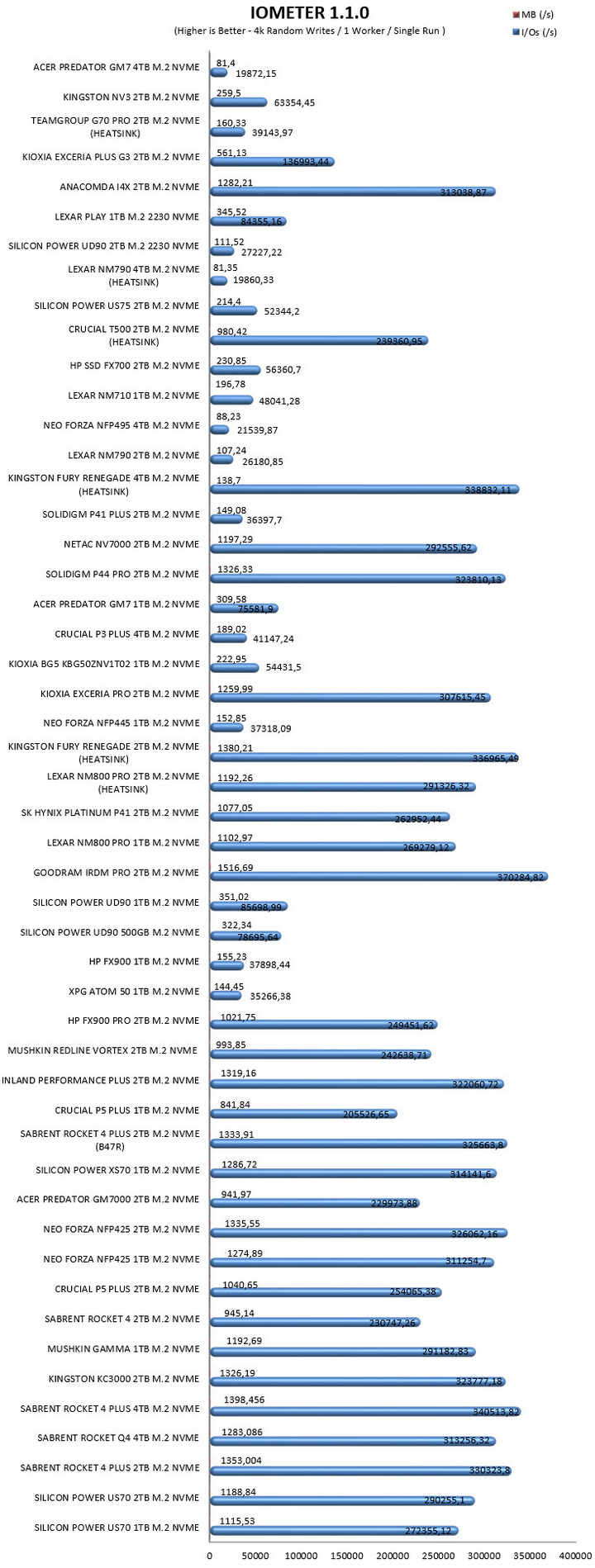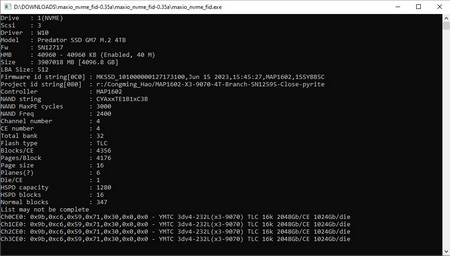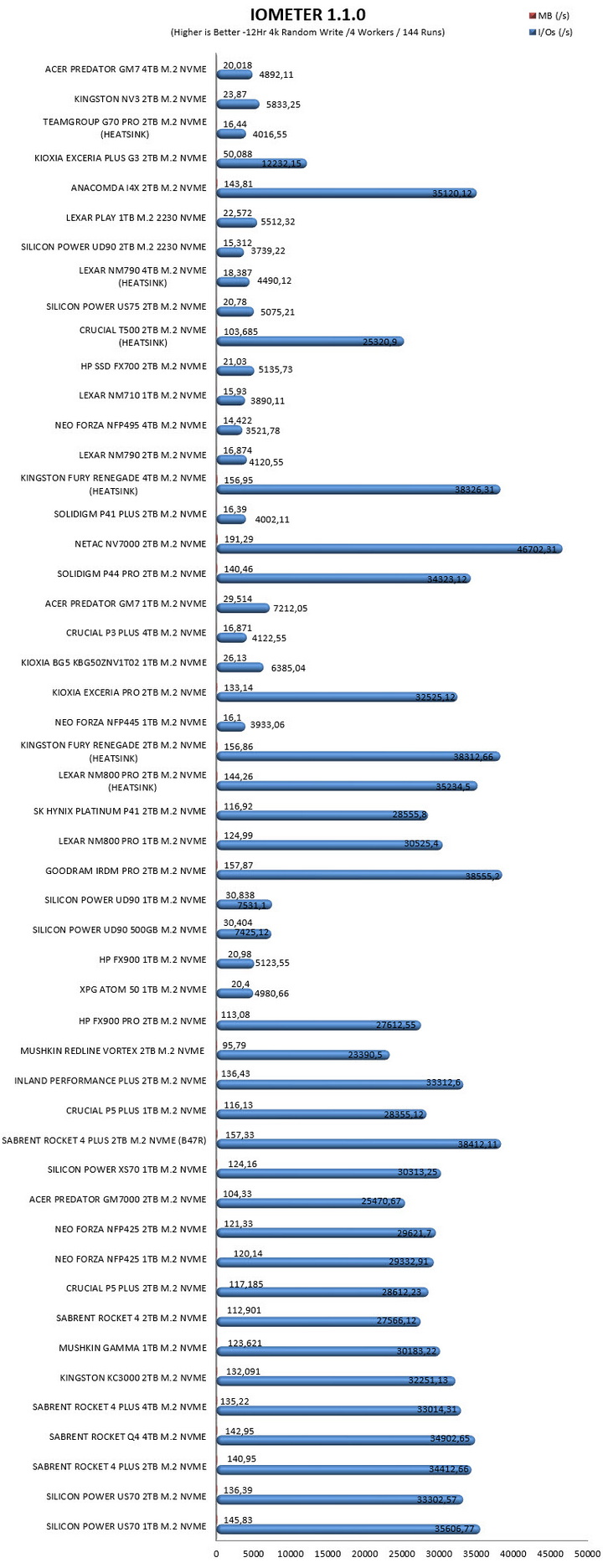INTRODUCTION

With consumer oriented Gen5 M.2 NVMe SSDs still nowhere near to what they should had been by now (not only in terms of available models but also sales) it's no wonder that most storage media manufacturers are still supporting the release of new Gen4 M.2 NVMe SSDs. This doesn't mean all of them follow the same course however, some have decided to update their product lines with entirely new models while others have chosen to increase the capacity of their current models. BIWIN belongs in the latter group of manufacturers and today with me I have no other than the 4TB variant of their Acer Predator GM7 Gen4 M.2 NVMe SSD.
Predator branded storage products are designed and manufactured by BIWIN Storage Technology company, a leading maker of quality flash memory, DRAM memory and solid-state drives (SSDs). Delivering premium products for serious gamers and overclocking enthusiasts looking for the ultimate experience, our mission is to provide best-in-class memory modules and solid-state drives that enhance overall system performance and gameplay. Defined by faster speeds and gaming-inspired design, these Predator storage products are built to be the Number One choice for gamers worldwide.
Just like the 1TB variant of the Acer Predator GM7 family of SSDs which I reviewed early last year (review here) the brand new 4TB variant is also based on the DRAM-less MAP1602 12nm quad-channel (R5) NVMe 2.0 NAND flash controller by MaXio (F3C version as opposed to the F2C of the former) which this time over BIWIN has paired with 2400 MT/s 232-layer 3D TLC NAND flash (X3-9070) by YMTC (128-layer for the former). The MAP1602 12nm quad-channel NAND controller by MaXio also packs quite a few features including advanced wear leveling algorithms, Host Memory Buffer (HMB) architecture (uses a fraction of your PC's system memory to cache mapping tables), pseudo SLC cache, bad block management strategy, hardware error-correction, L1.2 ultra-low power state and sudden power-loss protection, TRIM, NCQ, hardware support for AES256/SM4 encryption and support for TCG OPAL2.0. Once again BIWIN covers the entire Predator GM7 line with a 5-year limited warranty and in terms of durability they report a TBW (terabytes written) of 300 for the 512GB model, 600 for the 1TB model, 1200 for the 2TB model and 2400 for the 4TB model.
SPECIFICATIONS AND FEATURES

PACKAGING AND CONTENTS
Typically, at the front of the box we find a partial product picture, company logo, product name, drive capacity and connectivity.
The product specifications along with several certifications and the product serial number and barcode are printed at the rear of the box.
Along with the Predator GM7 4TB inside the box you'll also find an M.2 mounting screw and the quick start guide.
THE GM7 4TB
Unlike past GM7 models the 4TB variant comes with a somewhat thick sticker on top which has the line name on it.
This sticker is probably graphene laced to reduce temperatures from the controller and flash.


 Right under the sticker we find the MAP1602 DRAM-less NAND flash controller and four 232-layer 3D TLC NAND flash modules by YMTC.
Right under the sticker we find the MAP1602 DRAM-less NAND flash controller and four 232-layer 3D TLC NAND flash modules by YMTC.
The opposite side is empty and just has a sticker with the model serial name, barcode, capacity and certifications.
Thanks to the MaXio identification software you can see some details about the drive.
TEST BED


TESTING METHODOLOGY
Not long after I first started testing SSDs back in 2008, I concluded that it's almost impossible for any single benchmark suite to accurately measure their performance and that's why in certain benchmark suites we see amazing read/write performance numbers with some drives while in others things are quite different. The reason behind this is that some benchmarking suites are configured to read and write random chunks of data while others read and write constant (sequential) ones. So that's why i always use a very wide selection of benchmarking suites including AIDA64, HD Tach RW, HD Tune Pro, Crystal Disk Mark, Sisoftware Sandra Pro, AS SSD, IOmeter and ATTO. To get the most accurate results each test gets repeated a total of 6 times with the average performance numbers recorded into the charts*/****. Also, as of February 25th, 2015, our results will also include the Storage Networking Industry Association’s (SNIA) IOMeter tests. These tests include a 12 Hour write test used to “simulate” performance degradation over time and a mixed workload test which basically shows what you can expect when using an SSD continuously for roughly two hours. Unfortunately, due to the time required for these tests they get repeated a total of 3 times and not 6 as the above.
Many people have made inquiries about our charts in the past so once again please do keep in mind that the Charts have the average performance numbers of each drive recorded and not the peak (highest) ones. Also, although every single one of these programs can help potential buyers choose the right drive for their needs you should also remember that from any kind of benchmark up to real world usage the gap is not small (and usually most differences will go unnoticed by most people). All tests were performed in a fresh Windows 10 Pro x64 installation complete with every update up to the date of this review.
* Since November 2018 the SSD comparison charts have been divided to 2.5” and M.2 models to reduce their growing size.
** As of January 2021 for Gen 3x4 models I’ll be using the Core i9-7980XE test rig (after numerous tests the up to 6% difference in read & write performance compared to the i7-6700 system simply wasn’t enough to justify having an extra test rig around).
*** Since February 2022 M.2 NVMe Gen3 and Gen4 SSD drives are placed in different charts.
TEST RESULTS - AIDA64 / ATTO


TEST RESULTS - HD TACH RW / HD TUNE PRO


TEST RESULTS - SISOFTWARE SANDRA PRO / CRYSTAL DISK MARK


TEST RESULTS - AS SSD / IOMETER


TEST RESULTS - IOMETER SNIA

CONCLUSION

Even though BIWIN had announced at launch (it was listed on their website after all) that the GM7 line of PCIe 4.0 Gen4 M.2 NVMe SSDs would have a 4TB variant I didn’t hear about it until like 2 months ago. The main difference between the 4TB and the 1TB I reviewed a while back is of course the latest revision of the DRAM-less MAP1602 NAND flash controller by MaXio (which I don’t really know what it brings to the table) and the new 232-layer 3D TLC NAND flash by YMTC. The thing is that even though the X3-9070 3D TLC NAND flash by YMTC allows for greater storage capacity (and throttling was very limited during my tests) it doesn’t seem to be doing as well as their older 128-layer 3D TLC NAND, at least in most of my tests (need to point out that this could also be related to the new MaXio controller revision). Now I do realize that performance is not what everyone is looking for and well, this is a high capacity 4TB SSD with a good enough endurance (2400TBW) but still, this did surprise me.
If you’re looking to get your hands on one of the latest Acer Predator GM7 4TB PCIe 4.0 Gen4 M.2 NVMe SSDs then you’ll need to spend USD361.27 inside the USA (Amazon.com) and 324.86Euros inside the EU (Amazon.de). This price tag places the GM7 4TB right between many similar models from the competition (most DRAM-less ones) so it’s quite balanced. Overall, even though I was expecting more from the Acer Predator GM7 4TB M.2 NVMe SSD in terms of performance it does deliver as advertised and for that it deserves the Golden Award.

PROS
- Very Good Overall Performance (For a DRAM-Less Drive)
- 4TB Capacity
- 2400TBW / 1.5 Million Hours MTBF
- Cloning Software Included
- 5 Year Limited Warranty
CONS
- Performance (Compared To The 1TB Variant)

 O-Sense
O-Sense
















.png)

